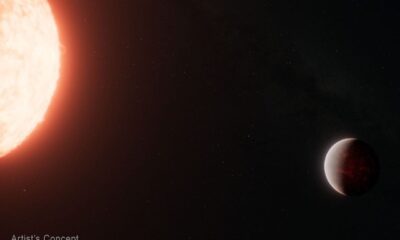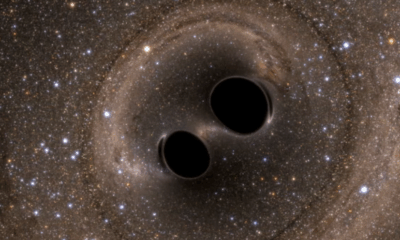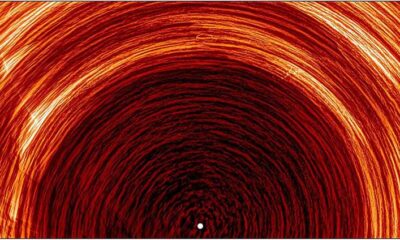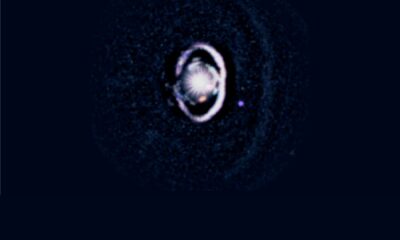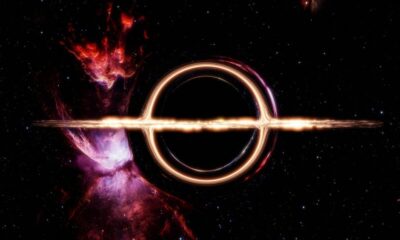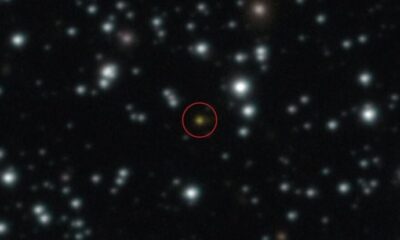Science
Scientists Uncover Rare ‘Second-Generation’ Black Holes
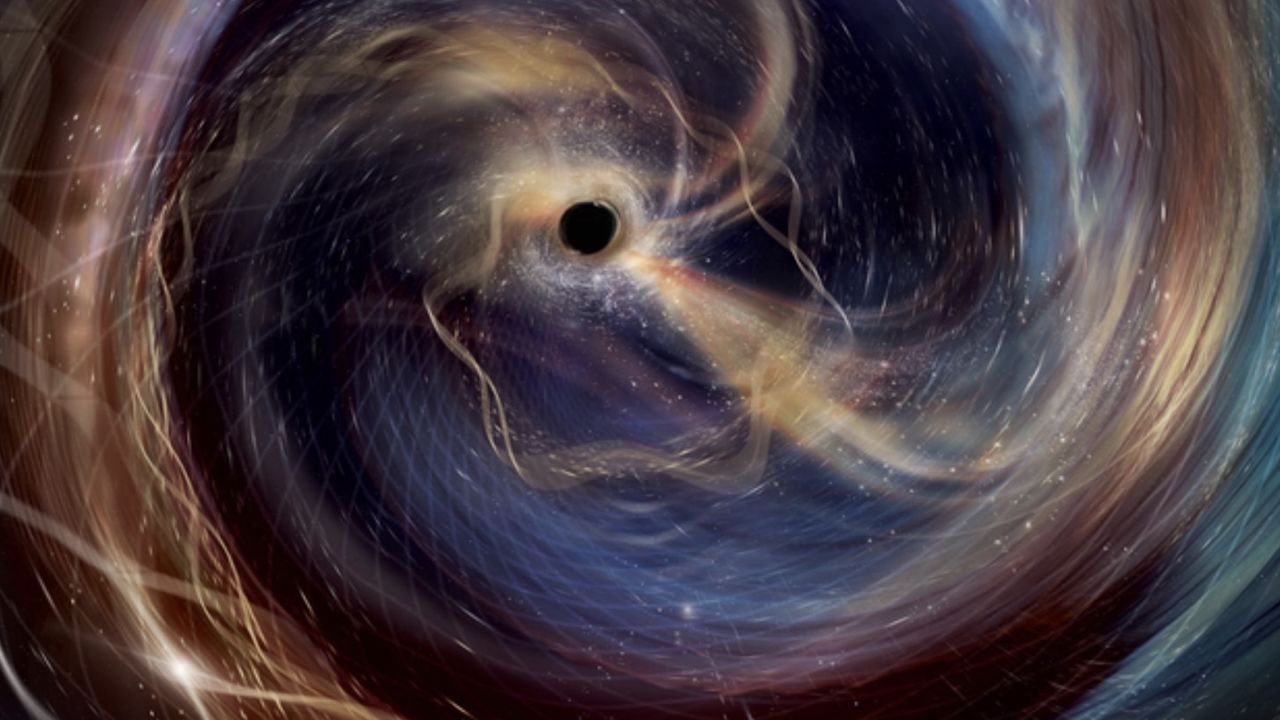
Physicists have detected two pairs of merging black holes, revealing the presence of rare “second-generation” black holes formed from earlier collisions. The findings, published on October 28, 2024, in The Astrophysical Journal Letters, provide significant insights into the nature of black holes and validate key principles of Einstein’s theories.
The study focuses on two recent mergers observed by the LIGO-Virgo-KAGRA Collaboration, a global network of gravitational-wave detectors. Each merger featured a larger black hole that was not only spinning rapidly but also significantly more massive than its partner. These unusual characteristics suggest that the larger black holes originated from previous mergers, marking them as second-generation objects.
Recent Gravitational Wave Discoveries
The first event, designated GW241011, occurred on October 11, 2024, approximately 700 million light-years from Earth. In this merger, black holes with masses of six and 20 times that of the sun collided. The larger black hole was noted for being one of the fastest-rotating black holes ever detected.
Just a month later, on November 10, 2024, the second merger, GW241110, was identified at a distance of 2.4 billion light-years. This event involved black holes with masses of eight and 17 solar masses. Remarkably, the larger black hole in this merger displayed a spinning direction opposite to its orbit, a phenomenon never previously observed.
Researchers analyzed the gravitational wave signatures from these events to determine various physical properties, including the mass and rotation of the black holes involved. Study co-author Stephen Fairhurst, a professor at Cardiff University, emphasized the significance of these findings, stating, “These black holes were formed from previous black hole mergers.”
Implications for Astrophysics
The unique characteristics of these mergers imply that the larger black holes underwent a process called “hierarchical merger,” likely occurring in dense star clusters where black holes frequently interact. Co-author Jess McIver from the University of British Columbia expressed excitement about the discoveries, noting that they provide strong evidence of active regions in the universe where dead stars collide.
Beyond the identification of second-generation black holes, the study reinforces several principles of physics originally proposed by Albert Einstein over a century ago. For instance, the gravitational wave signal from GW241011 revealed the larger black hole deforming as it spun, aligning with theories concerning rotating black holes by both Einstein and mathematician Roy Kerr.
This event also generated a distinctive “hum” in the gravitational-wave signal, attributed to the significant mass difference between the two black holes. Researchers likened this hum to musical overtones, further confirming Einstein’s predictions regarding gravitational waves.
The findings from these mergers not only enhance our understanding of black hole evolution but also contribute to broader discussions about the fundamental laws of physics governing our universe. As scientists continue to explore the implications of these discoveries, the insights gained could pave the way for future breakthroughs in astrophysics.
-

 Technology5 months ago
Technology5 months agoDiscover the Top 10 Calorie Counting Apps of 2025
-

 Technology2 weeks ago
Technology2 weeks agoOpenAI to Implement Age Verification for ChatGPT by December 2025
-

 Health3 months ago
Health3 months agoBella Hadid Shares Health Update After Treatment for Lyme Disease
-

 Health3 months ago
Health3 months agoAnalysts Project Stronger Growth for Apple’s iPhone 17 Lineup
-

 Health3 months ago
Health3 months agoErin Bates Shares Recovery Update Following Sepsis Complications
-

 Technology5 months ago
Technology5 months agoDiscover How to Reverse Image Search Using ChatGPT Effortlessly
-

 Technology3 months ago
Technology3 months agoElectric Moto Influencer Surronster Arrested in Tijuana
-

 Technology2 months ago
Technology2 months agoDiscover 2025’s Top GPUs for Exceptional 4K Gaming Performance
-

 Technology5 months ago
Technology5 months agoMeta Initiates $60B AI Data Center Expansion, Starting in Ohio
-

 Technology5 months ago
Technology5 months agoRecovering a Suspended TikTok Account: A Step-by-Step Guide
-

 Health5 months ago
Health5 months agoTested: Rab Firewall Mountain Jacket Survives Harsh Conditions
-

 Lifestyle5 months ago
Lifestyle5 months agoBelton Family Reunites After Daughter Survives Hill Country Floods

